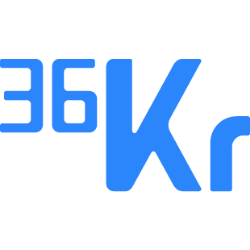
FMP

36Kr Holdings Inc.
KRKR
NASDAQ
36Kr Holdings Inc. provides content and business services in the People's Republic of China. It creates and distributes various content, including insightful reports on companies and timely market updates, as well as editorials and commentaries in various industries, such as technology, consumer and retail, and healthcare. The company's business services include online advertising services; enterprise value-added services, such as integrated marketing, advertisement agent, offline events, and consulting services; and subscription services to individuals, institutional investors, and enterprises. 36Kr Holdings Inc. was founded in 2010 and is based in Beijing, the People's Republic of China.
3.58 USD
0.175 (4.89%)
Operating Data
Year
2018
2019
2020
2021
2022
2023
2024
2025
2026
2027
Revenue
90.19M
53.21M
43.58M
44.37M
46.8M
40.74M
35.46M
30.87M
26.87M
23.39M
Revenue %
-
-41.01
-18.1
1.81
5.48
-12.95
-12.95
-12.95
-12.95
Ebitda
-2.5M
-34.71M
-10M
-3.52M
-10.98M
-9.97M
-8.68M
-7.55M
-6.57M
-5.72M
Ebitda %
-2.77
-65.24
-22.94
-7.93
-23.47
-24.47
-24.47
-24.47
-24.47
Ebit
-3.08M
-35.48M
-12.49M
-5.65M
-12.8M
-11.31M
-9.85M
-8.57M
-7.46M
-6.5M
Ebit %
-3.41
-66.69
-28.66
-12.74
-27.36
-27.77
-27.77
-27.77
-27.77
Depreciation
582.05k
770.11k
2.5M
2.14M
1.82M
1.35M
1.17M
1.02M
888.06k
773.03k
Depreciation %
0.65
1.45
5.73
4.81
3.89
3.31
3.31
3.31
3.31
EBIT (Operating profit)(Operating income)(Operating earning) = GROSS MARGIN (REVENUE - COGS) - OPERATING EXPENSES (R&D, RENT) EBIT = (1*) (2*) -> operating process (leverage -> interest -> EBT -> tax -> net Income) EBITDA = GROSS MARGIN (REVENUE - COGS) - OPERATING EXPENSES (R&D, RENT) + Depreciation + amortization EBITA = (1*) (2*) (3*) (4*) company's CURRENT operating profitability (i.e., how much profit it makes with its present assets and its operations on the products it produces and sells, as well as providing a proxy for cash flow) -> performance of a company (1*) discounting the effects of interest payments from different forms of financing (by ignoring interest payments), (2*) political jurisdictions (by ignoring tax), collections of assets (by ignoring depreciation of assets), and different takeover histories (by ignoring amortization often stemming from goodwill) (3*) collections of assets (by ignoring depreciation of assets) (4*) different takeover histories (by ignoring amortization often stemming from goodwill)